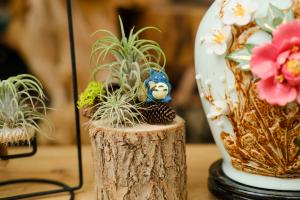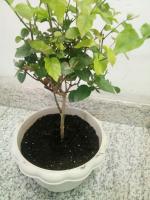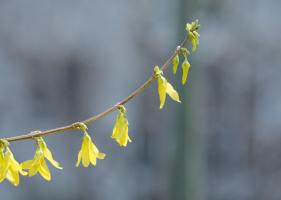Is Water Moss Fern a Flowering Plant?
Water moss fern is a type of aquatic plant commonly found in swamps, bogs, and other wetlands. With its vibrant green color and delicate lacy leaves, this plant is often mistaken for a flowering plant due to its ornamental appearance. However, the truth is that water moss fern is not a flowering plant, but rather a type of fern.
Characteristics of Water Moss Fern
Water Moss Fern, also known as the Salvinia species, is a floating aquatic fern that can grow up to 2 inches in length. It has two types of leaves - the floating leaves that are green and have a velvet-like texture, and the submerged leaves that are thin and translucent. Water moss fern reproduces through spores and can rapidly cover the surface of the water if not controlled. It is often used in aquariums to provide shelter for fish while also serving as a natural filter for the water.
What is a Flowering Plant?
Flowering plants, also known as angiosperms, are the most abundant and diverse group of plants on earth. They are characterized by the production of flowers, which contain the reproductive structures of the plant. These flowers are responsible for attracting pollinators such as bees, butterflies, and birds, which help to facilitate the process of pollination. Once pollinated, the flowers develop into fruits that contain seeds, which will eventually germinate into new plants.
Differences Between Water Moss Fern and Flowering Plants
While water moss fern may look similar to flowering plants, there are several key differences between the two. One of the most significant differences is in their reproductive structures. While flowering plants produce flowers and fruits, water moss fern reproduces through spores that are released into the water. Another difference is in the way they obtain nutrients. Flowering plants have roots that absorb nutrients from the soil or water, while water moss fern absorbs nutrients directly from the water through its leaves.
The Importance of Water Moss Fern
Water moss fern plays an important role in aquatic ecosystems. It provides habitat for fish and other aquatic animals, while also helping to prevent the spread of algae by blocking out sunlight. Additionally, water moss fern can help to improve the water quality by absorbing excess nutrients and pollutants from the water. Its ability to rapidly reproduce can also aid in the restoration of damaged wetlands by quickly colonizing open areas and stabilizing the soil.
In Conclusion
While water moss fern may resemble a flowering plant, it is actually a type of fern that reproduces through spores and absorbs nutrients directly from the water. Its ornamental appearance and importance in aquatic ecosystems make it a valuable addition to any aquarium or wetland habitat. Understanding the differences between water moss fern and flowering plants will help us appreciate the diversity of plant life and the important roles they play in our ecosystem.

 how many times do yo...
how many times do yo... how many planted tre...
how many planted tre... how many pine trees ...
how many pine trees ... how many pecan trees...
how many pecan trees... how many plants comp...
how many plants comp... how many plants can ...
how many plants can ... how many plants and ...
how many plants and ... how many pepper plan...
how many pepper plan...
































